Note: This post is about Second Hamonic generation using Periodically Poled LiNbO3 doped with MgO. We will focus on converting 1030 nm to 515 nm.
In Part 1, we will get the SHG using a PPLN which is not chirped and not apodized.
In Part 2, we will get SHG using a Chriped PPLN
In part 3, We will get SHG using both Chirp and Apodization.
The code used for all three parts is below:
PPLN_example_2d.m
Although, the number of points in y is 1,-The code can be easily changed to include to calculate in y plane as well (for considering asymmetric beams).
The pulse parameters that are considered are:
TFWHM=50 fs;
Pulse energy =0.1 micro joule
beam waist in x, y (1/e^2) =200 micrometer
PPLN LENGTH: 1.9 mm
Part 1 SHG using PPLN with Out Chrip And without Apodization
(In above file set Chrip =0, apodization --ADlength=0)
Note about the results: Since there is significant group velocity difference between the pulses, the SHG pulse is longer than the input pulse.
The plots are attached below:
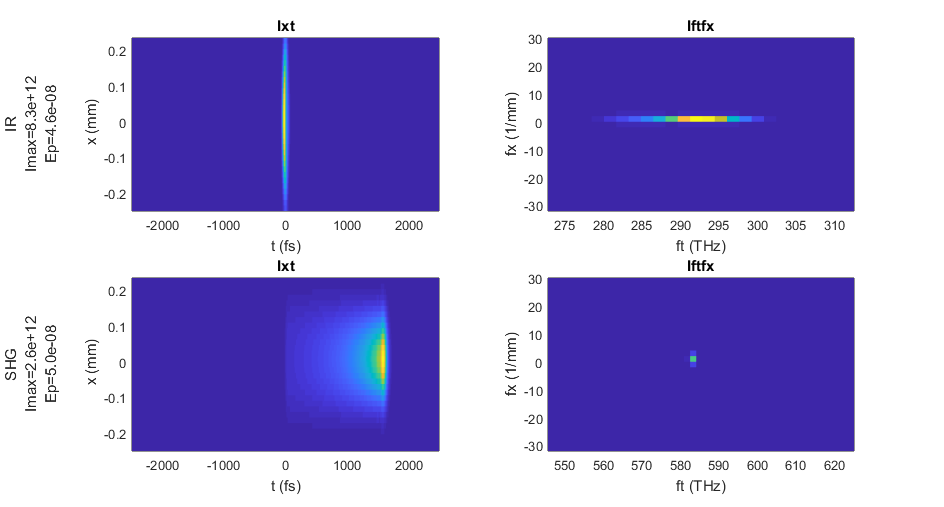 PPLN_SHG_no_chirp_no_AD.fig
PPLN_SHG_no_chirp_no_AD.fig
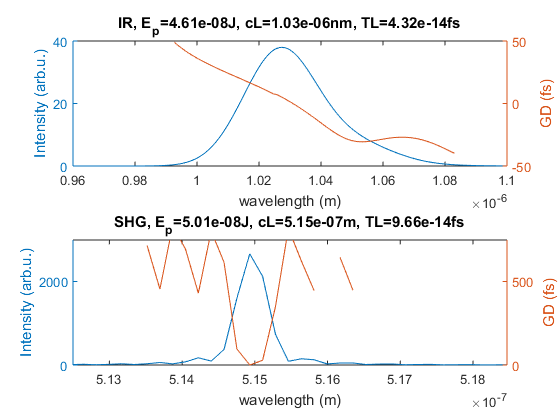 Spectrum_no_chirp_no_AD.fig
Spectrum_no_chirp_no_AD.fig
Part 2 SHG using PPLN with Chrip And without Apodization
(In above file set Chrip =0.7, apodization --ADlength=0)
Note: the specific value of chirp has to be changed depending on your particular need.
The plots are attached below:
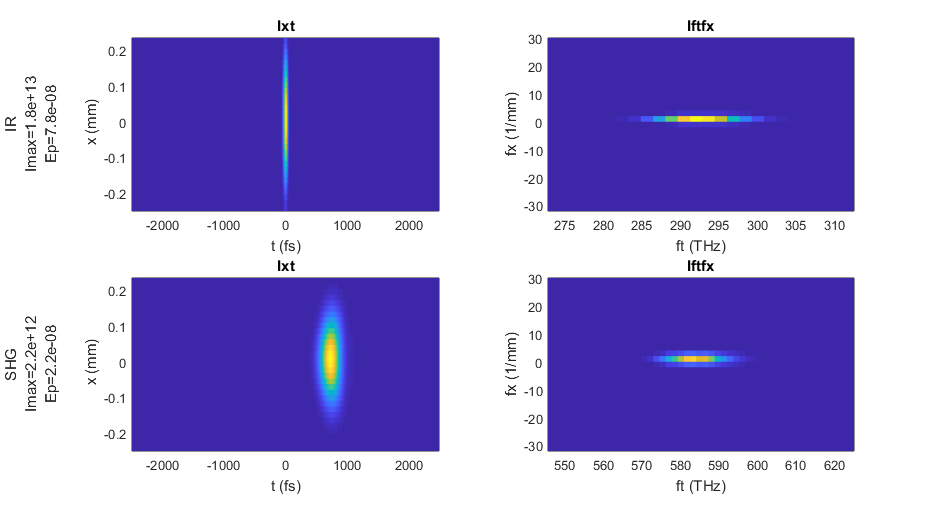 PPLN_SHG_chirp_no_AD.fig
PPLN_SHG_chirp_no_AD.fig
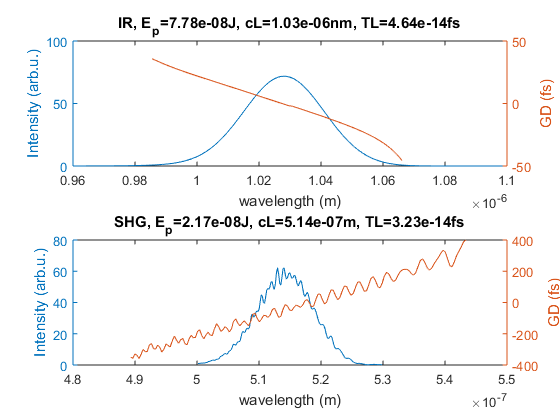 Spectrum_chirp_no_AD.fig
Spectrum_chirp_no_AD.fig
Part 3 SHG using PPLN with Chrip And Apodization
(In above file please set Apodization to 0.3;)
The plots are attached below:
 PPLN_SHG_chirp_AD.fig
PPLN_SHG_chirp_AD.fig
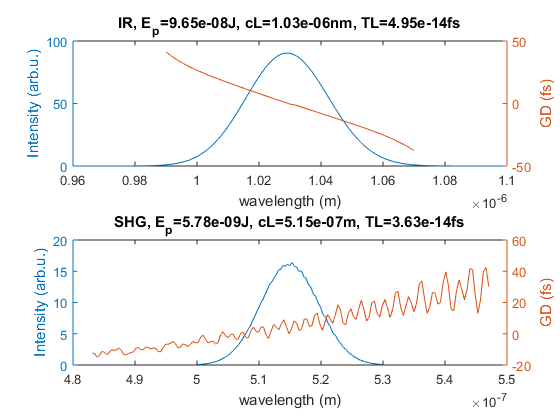 Spectrum_chirp_AD.fig
Spectrum_chirp_AD.fig